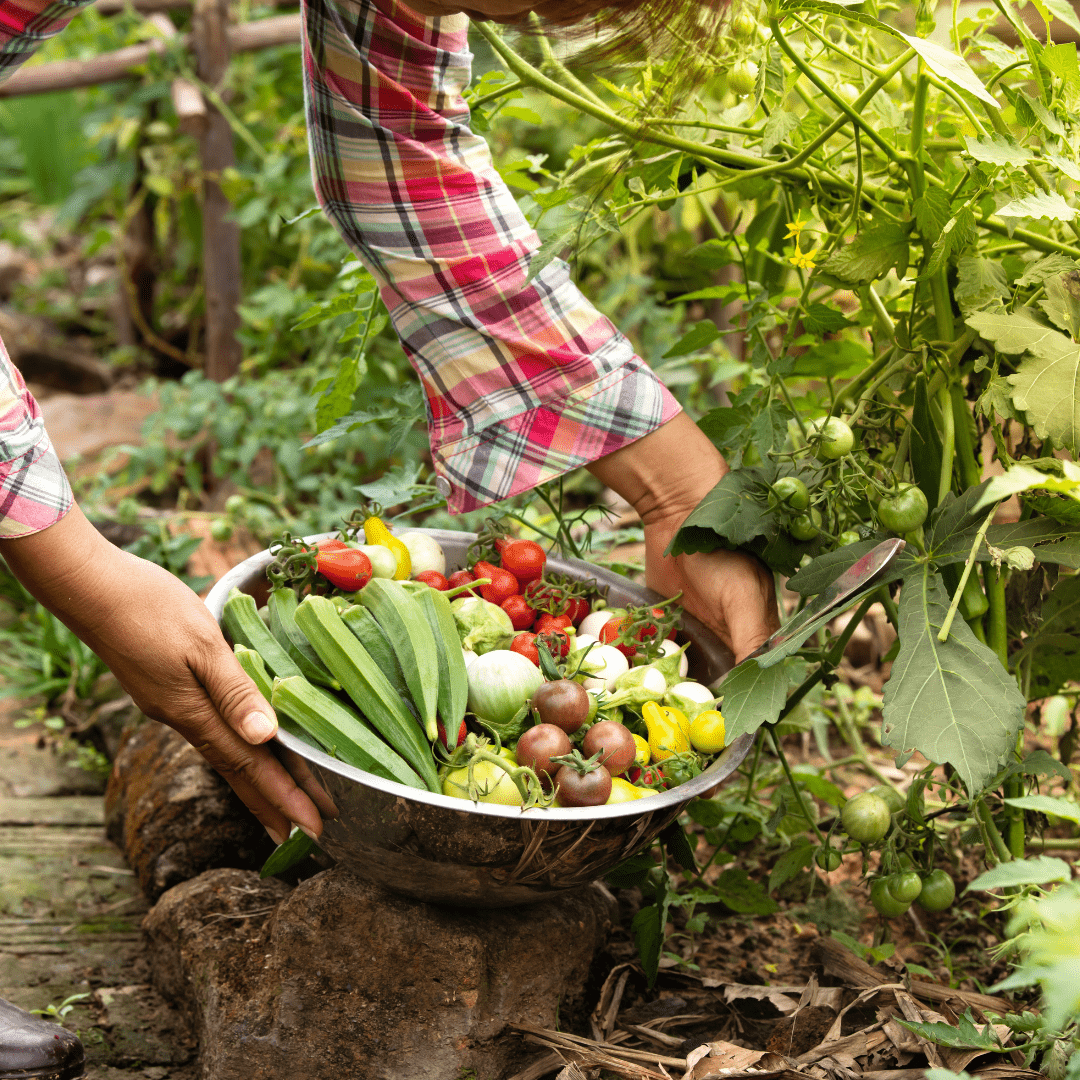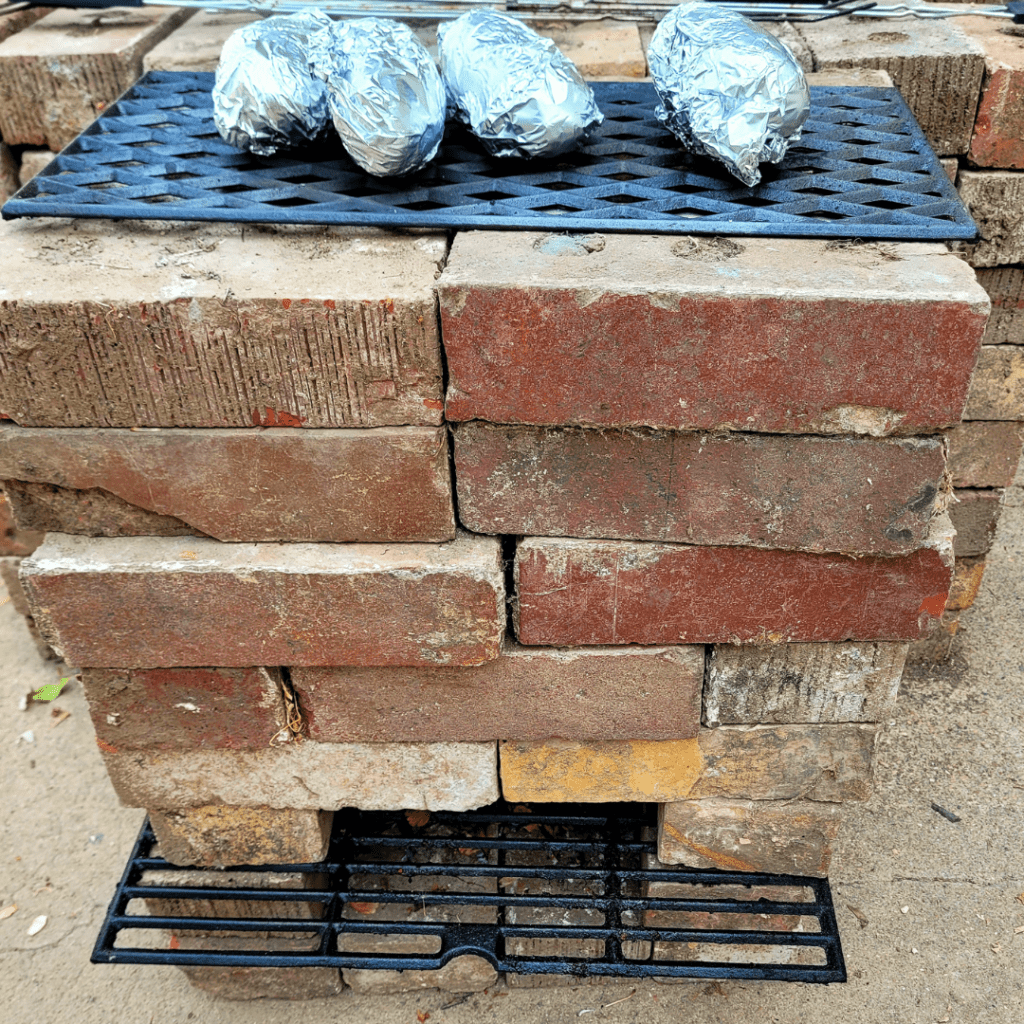Road to Self-Sufficiency: How to Start Your Journey — practical tips and real-life advice for creating an off-grid lifestyle and becoming more independent.
Starting your journey toward self-sufficiency can feel overwhelming at first—I know, I’ve been there. But the truth is, it doesn’t have to be complicated or expensive. Road to Self-Sufficiency: How to Start Your Journey is about taking small, intentional steps toward living more independently. From growing your own food to managing resources wisely, I’ll share the strategies and lessons I’ve learned on my homestead that make building a self-reliant life not only possible but deeply rewarding. Every barefoot step counts, and today is the perfect day to start!
This is a pinnable post. Tap or hover over any image in this post to pin to your Pinterest Boards.
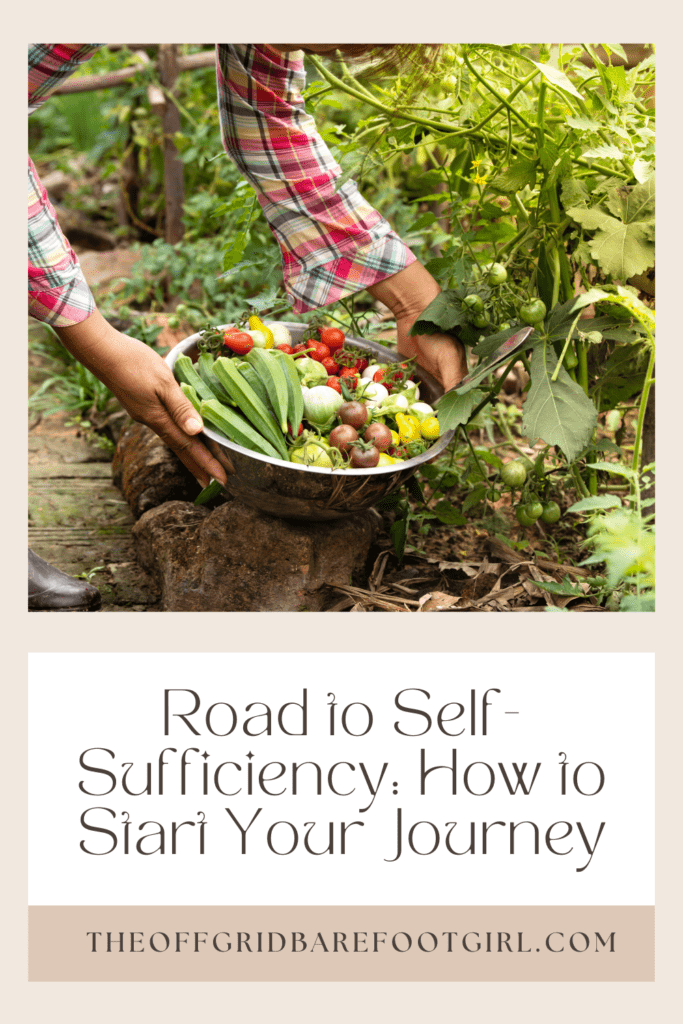
Understanding Self-Sufficiency
Self-sufficiency broadly refers to the state of not requiring any outside help in satisfying one’s basic needs, particularly with regard to the production of food. At its core, it is about relying less on outside systems, services, or goods to meet your daily needs. Whether it’s growing your own vegetables, making your own clothes, or generating your own electricity, self-sufficiency provides a path to live more sustainably, in harmony with nature, and more economically.
- Not requiring any outside help in satisfying one’s basic needs, particularly with regard to the production of food.
- Relying less on outside systems, services, or goods to meet your daily needs.
- Self-sufficiency is about growing your own vegetables, making your own clothes, or generating your own electricity.
- Provides a path to live more sustainably, in harmony with nature, and more economically.
Here are some self-sufficient garden inspiration ideas.
- How to Grow A Foodscape Garden From Scratch
- Why I Built A Survival Garden in My Backyard
- Square Foot Garden: The Easy Way To Plan Yours
- How to Make Your Backyard a Snack Yard
- Why Growing a Potato Patch Is Important for Survival
- 4 Easy DIY Garden Soil Tests to Do Now
Benefits of Self-Sufficiency
There are numerous benefits to achieving self-sufficiency. Firstly, it provides a sense of independence and freedom by reducing reliance on external factors. With a self-sufficient lifestyle comes the opportunity to consume food that is healthier, fresher, and free of harmful substances, since you can control what goes into your garden and onto your plate. In terms of economic benefits, a self-sufficient household might save on grocery bills and decrease spending on outsourced services. Additionally, it contributes to personal development skills, including problem-solving, strategizing, and resilience, as well as fostering a better understanding and value for precious resources.
- Provides a sense of independence and freedom by reducing reliance on external factors.
- Opportunity to consume food that is healthier, fresher, and free of harmful substances, since you can control what goes into your garden and onto your plate.
- Save on grocery bills and decrease spending on outsourced services.
- Contributes to personal development skills, including problem-solving, strategizing, and resilience.
- Fosters a better understanding and value for precious resources.
Here are some self-sufficient project inspiration ideas.
How to Learn 58 Self-Sufficient Skills Right Now
Why Doing a 1-Day No Power Survival Challenge Can Help Prepare Your Home for Emergencies
Challenges in Self-Sufficiency
While the benefits of self-sufficiency can be enticing, it’s crucial to consider the challenges. The commitment to becoming self-sufficient often requires a significant amount of upfront investment in terms of time, effort, and funding. For example, setting up a home garden or installing solar panels can be an expensive initial cost. Robust knowledge and expertise about various activities such as farming, construction, repair, etc. are also necessary to guarantee long-term sustainability. The diversity of skills required might be daunting for some, as well as the risks associated when facing unexpected obstacles such as weather disasters or crop diseases.
- Requires a significant amount of upfront investment in terms of time, effort, and funding.
- Robust knowledge and expertise about various activities such as farming, construction, repair, etc. are also necessary to guarantee long-term sustainability.
- The diversity of skills required might be daunting for some, as well as the risks associated when facing unexpected obstacles such as weather disasters or crop diseases.
Levels of Self-Sufficiency
Achieving complete self-sufficiency is a tough and arduous journey, but remember that it’s not an all-or-nothing proposition. Levels of self-sufficiency state that you don’t have to produce everything you need to enjoy the perks of this lifestyle. The first level might be growing some of your own food, while the next might involve generating some of your own energy. You can always decide the degree of self-sufficiency you’re comfortable with and able to sustain.
- Achieving complete self-sufficiency is a tough and arduous journey, but remember that it’s not an all-or-nothing proposition.
- Levels of self-sufficiency state that you don’t have to produce everything you need to enjoy the perks of this lifestyle.
- The first level might be growing some of your own food, while the next might involve generating some of your own energy.
- You can always decide the degree of self-sufficiency you’re comfortable with and able to sustain.
The Balance between Dependence and Independence
Self-sufficiency is a gauge of independence, but it absolutely does not denote complete seclusion from society. Though it reduces reliance on external systems, one cannot meet all needs singularly. Trades, networks, and communities are equally important. For instance, if a person grows a surplus of carrots, but no tomatoes, it makes sense to trade some with a neighbor who has an excess of tomatoes. This balance allows the best of self-sufficiency and community reliance to blend, creating a sustainable lifestyle both individually and collectively.
- Self-sufficiency is a gauge of independence, but it absolutely does not denote complete seclusion from society.
- Reduces reliance on external systems, one cannot meet all needs singularly.
- Trades, networks, and communities are equally important.
- Provides a balance that allows the best of self-sufficiency and community reliance to blend.
Discovering the Value of Self-Sufficiency
As we navigate the waters of today’s unpredictable world, self-sufficiency is fast becoming more of a requirement than a lifestyle preference. Developments such as economic instability, climate change, and food safety concerns are emphasizing the significance of having the capacity to meet our personal needs independently, consequently reducing potential vulnerabilities and uncertainties. As we progressively aim for sustainable living, self-sufficiency equips us and our communities with the ability to better adapt to disruptions and uncertainties. Essentially, self-sufficiency not only enhances the quality of life and creates a buffer against unforeseen adversities, but also encourages resilience while decidedly shrinking our environmental impact.
- Self-sufficiency is fast becoming more of a requirement than a lifestyle preference.
- Developments such as economic instability, climate change, and food safety concerns are emphasizing the significance of having the capacity to meet our personal needs independently.
- Equips us and our communities with the ability to better adapt to disruptions and uncertainties.
- Enhances the quality of life and creates a buffer against unforeseen adversities.
- Encourages resilience while decidedly shrinking our environmental impact.

Skills and Knowledge for Self-Sufficiency
Mastering Practical Skills for Self-Sufficiency
As we embark on the journey towards self-sufficiency, having a comprehensive set of practical skills becomes a vital tool in our arsenal. Gardening can be considered a cornerstone of practical skills for self-reliance, affording us the opportunity to grow our own fruits, vegetables, and herbs. This ability doesn’t just provide a steady supply of fresh and organic produce, but also helps in lowering both our environmental footprint and grocery bills.
Cooking plays another significant role in this suite of practical skills, encouraging homemade meals that can curtail our dependence on processed foods and take-away options, thereby promoting healthier lifestyles and financial savings.
Acquiring fundamental handyman abilities enables you to perform basic to complex DIY maintenance and repairs around your property, potentially saving a chunk of money that would otherwise be spent on professional repair services. This includes a spectrum of chores such as changing light bulbs, repairing loose handles, or even engaging in plumbing and electrical tasks.
Financial Skills for Self-Sufficiency
To achieve self-sufficiency, it is crucial to master financial skills such as saving, investing, and budgeting. Having a savings plan is a basic way to ensure there are funds available to cover essential expenses. This provides a financial buffer to lean on in case of emergencies, adding to a sense of independence and security.
Investing can help grow these savings. Although it involves a certain level of risk, gaining financial literacy can help understand the risks and benefits associated with various investment options and make more informed decisions about where to invest.
Budgeting is also a fundamental skill. It involves keeping track of your income and expenses and making sure that you are living within your means. It promotes more mindful spending and prevents falling into debt.
Personal Skills for Self-Sufficiency
In addition to practical and financial skills, certain personal abilities are essential for self-sufficiency. Problem-solving, for example, is a critical skill that can contribute to self-reliance. This skill can help one overcome obstacles, find innovative solutions, and make better decisions.
Resilience is another valuable trait. It allows one to recover from setbacks, adapt to changes, and keep going in the face of adversity. Cultivating resilience can mitigate stress and instill a sense of self-efficacy and independence.
Self-education is also vital for self-sufficiency. The commitment to continuously learn new skills and increase knowledge can lead to increased competence in a variety of fields. This can enhance one’s ability to become more self-reliant both professionally and personally.
Embarking on the journey toward self-sufficiency is an adventure that combines a variety of practical, financial, and personal skills. Although the road contains challenges, the rewards make it worthwhile, as it ensures independence, financial autonomy, reaffirms your self-esteem, and encourages personal evolution.
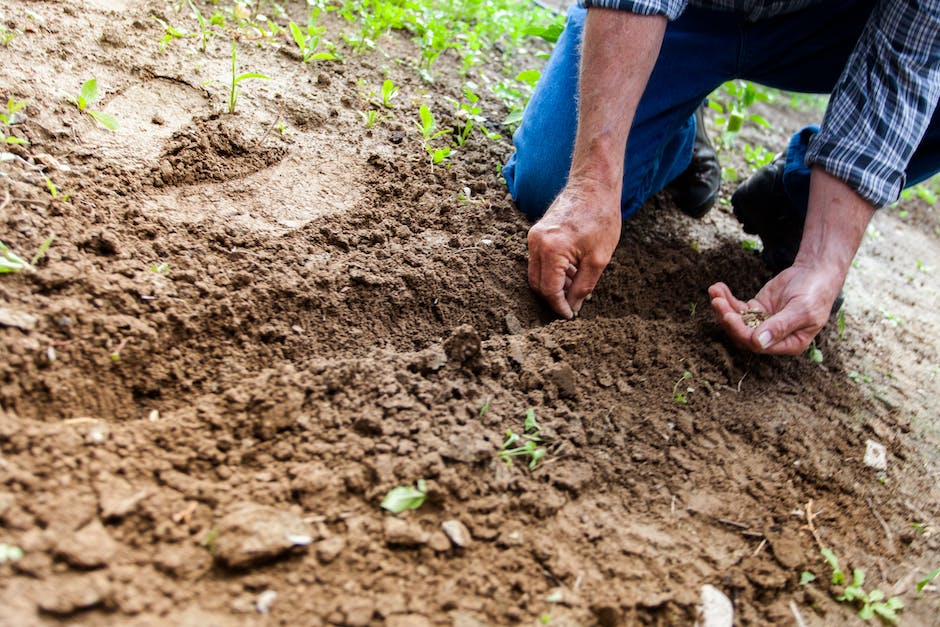
Creating a Self-Sufficient Lifestyle
Grasping the Concept of Self-Sufficiency
When we discuss self-sufficiency in this context, it entails a holistic lifestyle where an individual or a family aspires to meet their own needs, thus lowering dependence on external entities or services. This can range from cultivating your own food and creating your own energy, to fabricating your own clothes. The notion isn’t limited to physical goods alone, but it also envelops mental resilience, acquiring new capabilities, minimizing waste, and making conscientious decisions about consumption.
- Entails a holistic lifestyle where an individual or a family aspires to meet their own needs, thus lowering dependence on external entities or services.
- Cultivating your own food, creating your own energy, to fabricating your own clothes.
- Envelops mental resilience, acquiring new capabilities, minimizing waste, and making conscientious decisions about consumption.
Steps Towards a Self-Sufficient Lifestyle
One of the beginning steps to cultivating a self-sufficient lifestyle is to understand one’s current consumption. This involves tracking what one regularly buys, uses, and wastes. Once an individual has an idea of their habits, they can then identify potential areas of change. For example, if a person finds they purchase a lot of packaged foods, they might opt to start cooking more meals at home. If they are often buying new clothes, they might learn to mend and repair items themselves.
- Cultivating a self-sufficient lifestyle is to understand one’s current consumption.
- Tracking what one regularly buys, uses, and wastes.
- Identify potential areas of change.
- Opt to start cooking more meals at home.
- Learn to mend and repair items themselves.
Goal Setting: Small and Achievable
Setting small, achievable goals is crucial when transitioning to a self-sufficient lifestyle. Instead of aiming to become fully self-sufficient immediately, start with simpler objectives like gardens or energy-efficient appliances. Gradual changes can be less overwhelming and more sustainable in the long run. It’s also important to celebrate small victories as they come to maintain motivation and a favorable attitude toward self-sufficiency.
- Setting small, achievable goals is crucial when transitioning to a self-sufficient lifestyle.
- Start with simpler objectives like gardens or energy-efficient appliances.
- Gradual changes can be less overwhelming and more sustainable in the long run.
- Celebrate small victories as they come to maintain motivation and a favorable attitude towards self-sufficiency.
Reducing Wastage and Conscious Consumption
Reduction of waste and conscious consumption are important aspects of self-sufficiency. It’s not just about producing more, but also minimizing what one uses and discards. This can involve buying fewer disposable items, opting for items with less packaging, composting organic waste, or reusing items such as jars or bags. Conscious consumption also extends beyond physical goods. Think about energy use, water use, and even digital consumption.
- Reduction of waste and conscious consumption are important aspects of self-sufficiency.
- Minimizing what one uses and discards.
- Buying fewer disposable items, opting for items with less packaging, composting organic waste, or reusing items such as jars or bags.
- Conscious about energy use, water use, and even digital consumption.
Learning and Adapting New Skills
Part of self-sufficiency lies in developing a variety of skills that can help reduce dependence on external systems. These can be traditional skills like gardening, sewing, or woodworking, but they can also include modern skills like basic plumbing or electrical work, digital literacy, or alternative energy production.
- Developing a variety of skills that can help reduce dependence on external systems.
- Gardening, sewing, or woodworking.
- Modern skills like basic plumbing or electrical work, digital literacy, or alternative energy production.
To further adapt to new skills, check out How to Learn 58 Self-Sufficient Skills Right Now.
Going Off the Grid: Energy Self-Sufficiency
Transitioning to renewable energy sources can majorly contribute to becoming self-sufficient. Solar panels, wind turbines, or other renewable energy systems can help reduce dependence on the grid, save money in the long run, and contribute to a more sustainable planet.
- Transitioning to renewable energy sources can majorly contribute to becoming self-sufficient.
- Solar panels, wind turbines, or other renewable energy systems can help reduce dependence on the grid, save money in the long run, and contribute to a more sustainable planet.
Food Self-Reliance
Growing and preserving one’s own food is a big part of self-sufficiency. Even small-scale garden or farming operations can significantly reduce dependence on store-bought food. Anyone can start with a small herb garden or a few vegetable plants and scale up according to space, time, and capability.
Embracing the journey to self-sufficiency requires a gradual transformation of habits, mindset, and acquirable skills. It might be a challenging task, but it paves the way to a more autonomous, sustainable, and resilient way of living.
- Growing and preserving one’s own food is a big part of self-sufficiency.
- Small-scale garden or farming operations can significantly reduce dependence on store-bought food.
- Anyone can start with a small herb garden or a few vegetable plants and scale up according to space, time, and capability.
- Embracing the journey to self-sufficiency requires a gradual transformation of habits, mindset, and acquirable skills.
- Paves the way to a more autonomous, sustainable, and resilient way of living.
Let’s take a look at how this journey unfolds in practice, using an inspiring example from the wild Alaskan frontier.
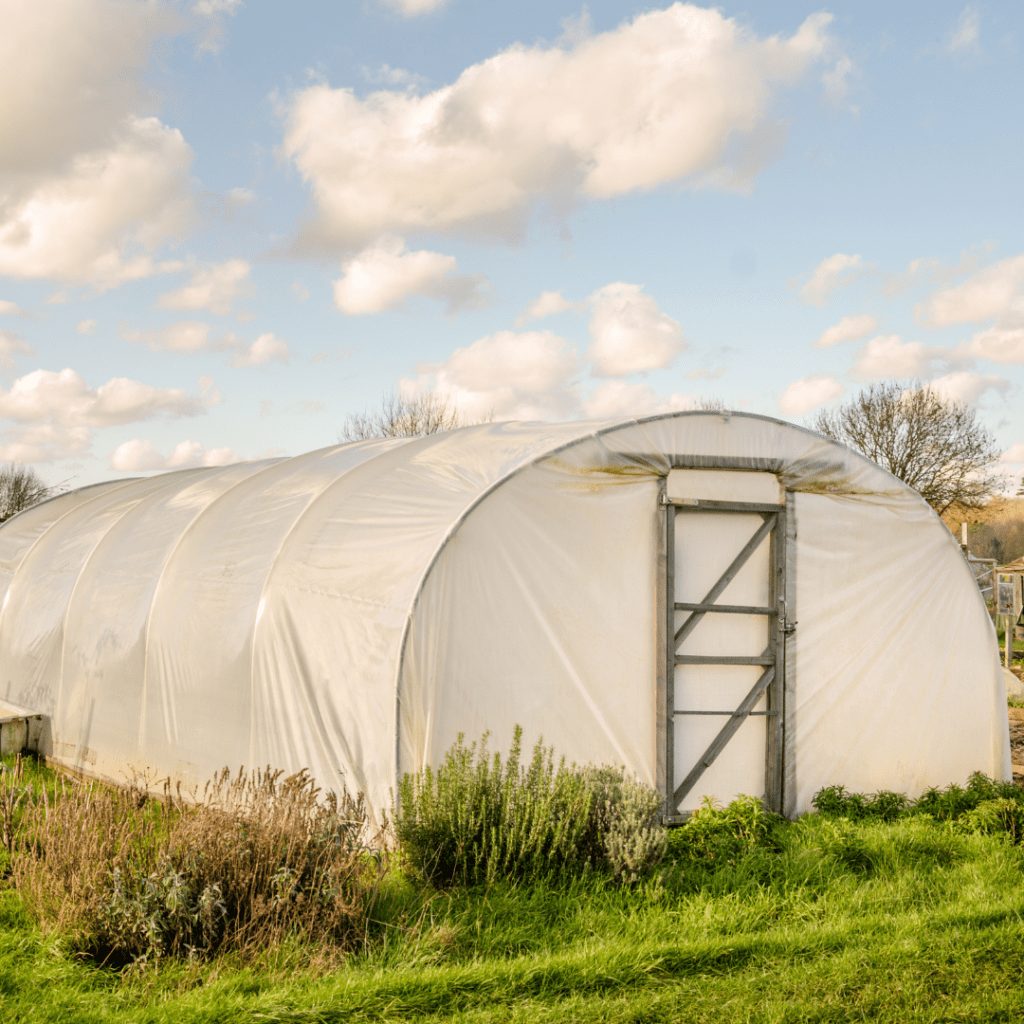
Case Studies on Self-Sufficiency
Case Study 1: Embracing Energy Self-Sufficiency in Alaska’s Wilderness
In the late 1960s, deep within Alaska’s remote and rugged wilderness, Richard Proenneke decided to abandon the creature comforts of modern living. Using only hand tools, he built a humble, but sturdy cabin, commencing a lifestyle of complete self-sufficiency. Proenneke grew his own food, relied on hunting and fishing for meat, and gathered wild berries and nuts for sustenance. Despite facing harsh weather conditions, fluctuating food sources in the winter, and ever-present threats from wildlife, he persevered until he was 82. Proenneke’s journey teaches us valuable lessons about respect for nature, survival skills, and above all, the perseverance we must embrace on the path to self-sufficiency.
Case Study 2: Adopting Self-Sufficient Farming Practices
John and Molly Chester, a couple from Southern California, turned their dreams of owning and operating a biodynamic, self-sufficient farm into reality. Their 200-acre farm, Apricot Lane Farms, started as a piece of land heavily reliant on chemical pesticides. Today, it thrives as a biodiverse farm with over 75 different types of fruit, a herd of goats and sheep, chickens, and many other forms of life. They faced numerous struggles along the way, including crop destruction by pests, a steep learning curve in farming practices, and financial challenges. Their advice for others pursuing a self-sufficient lifestyle includes embracing nature as a complex system, being patient, and remembering that every challenge is an opportunity for learning and growth.
Case Study 3: The Transition Towns Movement
Initiated in Totnes, England, the Transition Towns Movement is a community-led response to the challenges of climate change, economic instability, and fossil fuel dependency. It encourages local communities to build resilience by reducing their environmental impact, becoming energy self-sufficient, promoting local economic growth, and rebuilding a sense of community. The movement faced initial resistance due to skepticism and apprehension about its feasibility. However, as more communities adopted the Transition Town methodologies, the movement has seen increased support. The movement advises communities eager to become more self-sufficient to start small, focus on local resources, engage the wider community, and adopt a long-term perspective.
Case Study 4: The Island of Samsø
Denmark’s island of Samsø became a pioneer in self-sufficiency when it shifted to 100% renewable energy within ten years. The inhabitants of Samsø won a national competition in 1997 and received funding to transform their island into a self-sufficient community. The process involved erecting 11 land-based wind turbines that provide electricity for the island’s homes and switching to the use of biomass for heating. The transformation wasn’t easy and required the creation of an energy academy to educate the population about renewable energy. The inhabitants of Samsø advise prospective self-sufficient communities to foster strong community engagement, deliver continuous education, and remain patient as transformation does not happen overnight.
Self-Sufficiency: A Real-Life Example from Hawaii
Living a self-sufficient life, although challenging, can also feel incredibly rewarding. One inspiring example of this comes from the adventurous Mascaro family, settled in the remote area of Puna, Hawaii. This family has chosen to live off the grid, producing their power via solar panels and securing their water supply through a rain catchment system. Their food predominantly comes from their own small garden, combined with locally hunted game and freshly caught fish. Naturally, this lifestyle comes with its share of challenges – from tropical storms damaging their systems to missing out on many modern conveniences and tech advancements. However, John Mascaro reassures that the joys of self-sufficiency outweigh its challenges. According to him, preparedness, understanding of the local climate and resources, and being open to constant learning and innovation are key when considering a similar lifestyle shift.

Resources and Support For Self-Sufficiency
Enrich Your Knowledge of Self-Sufficiency: Must-Read Books
To make such a transition smoother and more informed, several insightful books provide guidance.
For instance, “The Backyard Homestead” by Carleen Madigan offers a comprehensive aiming guide to producing enough food for a family on just a quarter acre.
John Seymour’s “The Self-Sufficient Life and How to Live It” teaches about maximizing and efficiently using available land resources.
Furthermore, “The Encyclopedia of Country Living” by Carla Emery explores many facets of self-sufficient life, including raising chickens and growing vegetables.
Blogs on Self-Sufficiency
Blogs are a treasure trove of information and first-hand experiences on self-sufficiency, like the one you are reading!
Another well-known blog in this domain is, The Prairie Homestead, by Jill Winger, which offers tips and guides on homesteading, gardening, cooking, and natural health.
A favorite and useful blog I like to read is Moral Fibres, which focuses on sustainable living, including topics like eco-friendly travel, green fashion, and energy-saving tips.
Websites on Self-Sufficiency
Many websites offer useful resources and support on the topic of self-sufficiency. Mother Earth News, for instance, offers in-depth articles on everything from renewable energy to organic gardening.
Instructables provide interesting DIY projects for creating things from scratch.
Sustainable Home can guide you on how to lead an ecologically friendly lifestyle.
Courses on Self-Sufficiency
There are numerous online courses that help people develop the skills necessary for self-sufficiency.
Coursera’s “Sustainable Agricultural Land Management” could be the perfect starting point for learning about sustainable farming practices.
Similarly, Penn State Extension offers courses that cover a wide range of topics related to self-sufficiency, from food preservation to beekeeping.
Communities that Support Self-Sufficiency
Joining a community is a vital part of the journey toward self-sufficiency. The Reddit homesteading community is a hub for sharing knowledge, asking for advice, and learning from others’ experiences.
The National Self-Reliance Project is another supportive community that promotes and provides resources for self-reliance and preparedness.
Similarly, Self-Sufficient Me is an excellent blog to learn from like-minded individuals, to share and learn about topics such as gardening, livestock, and frugal living.
Additional Resources
It’s also worth exploring libraries, county extension offices, local community colleges, and adult education programs for more self-sufficiency resources. Many of these places offer classes, workshops, and resources on topics ranging from food preservation to renewable energy systems.
Websites like Eventbrite can also be beneficial for finding local, in-person, or virtual events and workshops about self-sufficiency topics.

From this exploration into self-sufficiency, we become aware of how this enduring lifestyle choice can significantly enhance our quality of life. Not only does it foster essential skills and knowledge, but it also promotes a profound sense of satisfaction derived from providing for one’s needs.
The real-world case studies featured exemplify the application and joys of living a self-sufficient lifestyle. The journey to self-sufficiency may seem daunting initially, but with the right resources, support systems, and a determined mindset, it’s entirely achievable.
We have the immense potential to shape our lives radically, and self-sufficiency is a path that allows us to realize that potential, leading to rewarding experiences and a resilient mindset.
Conclusion
The road to self-sufficiency isn’t a sprint—it’s a journey, one barefoot step at a time. Every small habit you build, every skill you learn, and every seed you plant brings you closer to independence and peace of mind. You don’t need to do everything at once; start where you are, use what you have, and grow from there. The more you prepare, the more confident and capable you’ll feel, no matter what life throws your way. Your self-sufficient future starts today—so take that first step and keep moving forward.
Discover the essential steps to begin your self-sufficient lifestyle and build lasting preparedness in The Complete Guide to Emergency Preparedness: Everything You Need to Thrive in Any Situation.
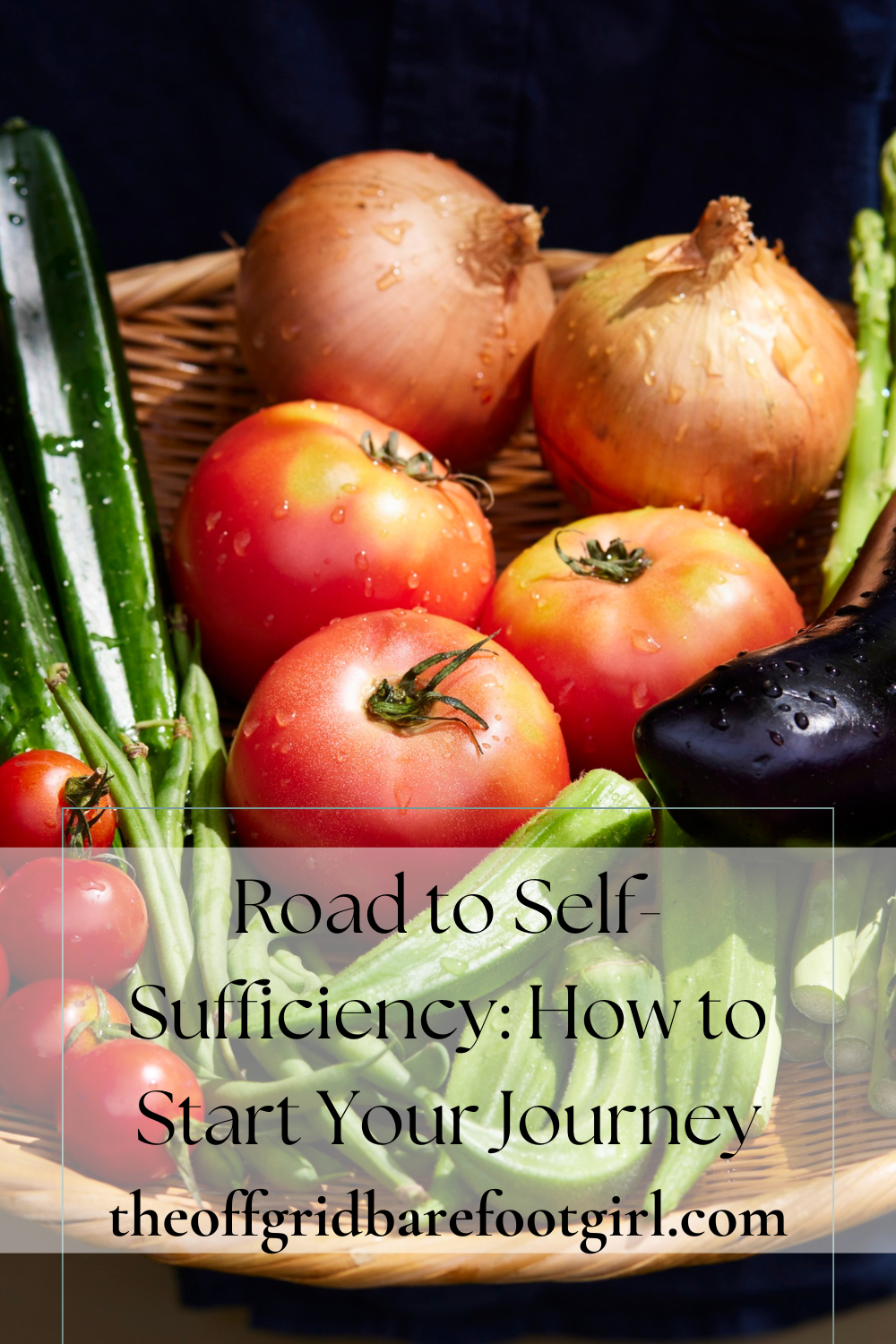
Frequently Asked Questions
1. What is self-sufficiency, really?
Self-sufficiency is about being able to meet your basic needs—food, water, energy, and shelter—without relying heavily on outside systems. It’s a lifestyle of independence and preparedness.
2. How do I start if I have limited space or resources?
Start small! Even a balcony garden, container vegetables, or basic food preservation techniques are steps toward self-sufficiency. It’s about consistent progress, not perfection.
3. How long does it take to become self-sufficient?
It’s a lifelong journey. Some skills and systems take months to build, others years, but every effort counts. Focus on progress, not speed.
Writio: The Ultimate AI Writing Assistant. This article was magically brought to life by Writio, your innovative content creation companion.
Summary
I hope I have inspired you to live sustainably with these tips and products.
If you were encouraged by this post, I invite you to check out my FREE Printables Page for fun free printables, planners, and charts.
ENTER MY FREE Printables Page HERE
Here are some more of my gardening inspiration posts to check out!
How to Feed Your Family During the Government Shutdown
12 Best Tips for Creating an Eco-Friendly Household
Survival Lessons from the Great Depression
The Best 15 Homesteading Blogs to Follow for Inspiration
How to Criminal-Proof Your Home with These 5 Steps
How to Create Your Cottagecore Aesthetic Dream Home
Ideas for Rustic Living Room Vibes You’ll Love All Year Round!
How to Prep Your Home for Chilly Fall Nights
Bring Back the Magic of Fireflies and Lightning Bugs with Solar Power!
The Ultimate Portable Power Bank for Homesteaders and Preppers!
A Bug Out Bag That’s Actually Ready — When You Need It Most!
How to Live a Cozy Off-Grid Life
The Best Off-Grid Kitchen Tools for Indoors (No Power Needed!)
DIY Solar Made Simple: How I Powered My Off-Grid Life with Practical Preppers!
Sleeper Cells in America: What You Need to Know Now!
How People Are Surviving in Broken Cities with Broken Systems
When the World Hurts, We Prepare with Purpose
How to Live On Raw Land: Everything You Need to Know!
How to Do Off-Grid Laundry with Eco-Friendly Laundry Detergent!
Hollywood on Fire! What Secrets Are In the Ashes?
FEMA Concentration Camps? Are Echos of the Past Returning?
How Likely Is a Russian EMP? One Pulse Could Black Us Out!
What Dark Secrets Lie in The Bird Flu Symptoms?
The Blackout Sun: Who Is Blacking Out Our Sunlight?
More Posts!
How to Bug-In During a Deep Freeze!
‘FOGVID-24?’ What’s in the Mysterious Fog That’s Making Everyone Sick?
From Snow to Sow: Plan Your Spring Garden Now!
11 Fun Ways to Brighten Your Spring Garden with Personality
Top 10 Spring Garden Crops to Harvest in 30 Days and Eat Now!
The Best Survival Crops for Caloric Survival
More Posts!
My Victory Garden: What I Learned from 5+ Years
Why Every Family Should Have a Victory Garden in Their Backyard Now!
The Best Perennials for a Long-Term Survival Garden
The Best Essential Oils for Plants That Repel Garden Bugs
How to Grow Green Garden Peas: Perfect Plump Peas!
Hugelkultur: Does This Epic Pioneering Method Actually Work?
9 Ways to Celebrate Earthing Day in Your Garden!
Gardening Indoors: Secrets of Growing Your Food Inside!
How to DIY a Milk Jug Drip Irrigation System!
Why Cedar Mulch Is The Perfect Natural Weed Barrier
Gardening Projects
Onions: How to Grow Onions for Storage
Peas: How to Grow Garden Peas for a Bumper Crop
Carrots: How to Grow Carrots for a Bountiful Harvest
Prep Your Garden for Spring Planting with These Expert Tips!
How to Grow a Prepper Garden to Survive and Thrive
The Best Garden Tools You Need for a Productive Season
Fastest Growing Vegetables for Your Survival Garden
How to Grow Marigolds As Pest Control In Your Vegetable Garden
Must-Have Tools for a Successful Balcony Vegetable Garden
How to Effectively Combat Powdery Mildew in Your Garden
The Best Tips for Organic Gardening
How to Release Ladybugs In Your Garden for Organic Pest Control
More Posts!!
The Best Garden Snail Control Strategies
The Best Spring Vegetables to Grow in Your Garden
Seed Starter Mix: How To Make Your Organic Seed Starter Mix At Home
How to Grow a Productive Canning Garden
How to Plant and Grow a Salsa Garden
Easiest Heirloom Vegetable Seeds to Grow Now
How to Use the Hand Twist Claw Tiller: Tackling Tough Soil
More Fun Gardening Posts to Check Out!
Planning Your Garden: How to Plan a Vegetable Garden: Expert Green Thumb Tips!
Winterizing the Garden: How to Winterize Your Vegetable Garden: Step-by-Step Checklist
Mulching the Garden: How to Make Leaf Litter Mulch
Grow a Pumpkin Patch: How to Grow a Pumpkin Patch in Your Backyard
How to Grow a Fall Garden: 9 Best Fall Crops
Clever Ways to Incorporate Indoor Composting into Your Home
How to Start Composting for the Garden: A Step-by-Step Guide
The Ultimate Guide to Composting in Your Suburban Backyard
Why I Built A Survival Garden in My Backyard
16 Best Medicinal Herbs to Grow in Your Garden Now
Blessings,
The Off Grid Barefoot Girl

